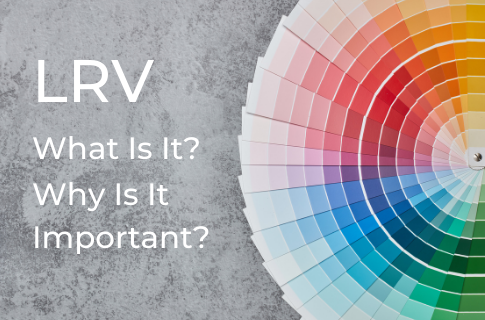
What Is LRV & Why Is It Important When Selecting Colours?
LRV stands for Light Reflectance Value and is a measure of the amount of visible light that is absorbed into a coloured surface. The LRV rating can be thought of as the percentage of light that is absorbed. The LRV scale ranges from 0-100, with LRV=0 being a brilliant white colour, with 0 percent light absorbtion (or 100% light reflection) and LRV=100 being the blackest of blacks, with 100% light absorbtion (or 0% light reflection).
Click here for the LRV ratings of the Acculine Inpro colour range
The LRV scale helps interior designers and architects determine how dark (or light) the interior will appear when finished in their colour preferences. Conversely it is also used by lighting consultants to determine how many lights are needed in a room and where they will be needed.
LRV is a very important consideration in aged care environments, to make them a comfortable place to live. Older people often need at least double the amount of light as younger people to see things properly and reduce visual strain on their eyes. It can also be used to create a contrasting colour where required (such as on doors), to draw attention to them.
The LRV rating is a good indicator for interior designers selecting Door & Wall protection colours on how closely the desired colour will match the equivalent paint colour. This is because a similar LRV rating indicates that the depth of colour is also very similar.
Note: The more light there is to the interior (natural or artificial), the greater the contrast will be between your wall protection colour and your paint colour.
The Science
I don’t want to bore you, so I won’t get too deep, but it is important to know a little bit about the science behind colours and LRV. I am sure you would have learnt the colours of the rainbow in primary school and learnt that white light is made up of the colour spectrum from Red to Violet and everything in between. The point is that you need light to see colour. Without any light to your interior, you will not see any colour and no matter what colour you paint your walls, it won’t brighten up a dark room if there is an absence of light. When light shines on your painted surface, you are not actually seeing the paint, you are seeing the colours of the light that is reflected off the surface.
